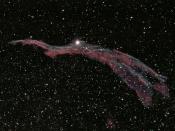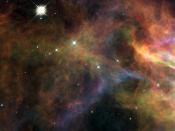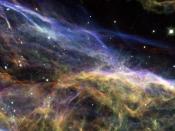The Veil Nebula rides high in the northern summer sky on the wings of the beautiful constellation Cygnus the Swan. Cygnus' brightest star, Deneb, along with Altair in Aquila and Vega in Lyra, form the well-known asterism of the Summer Triangle, which encloses a fabulous portion of the Milky Way. Within Cygnus lie numerous binocular and telescopic objects that delight observers. The Veil Nebula ranks as one of the most fascinating -- and challenging.
Myths galoreDuring the reign of emperor Caesar Augustus, Roman poet Ovid (43 B.C-17 A.D.) wrote the Metamorphoses. Its stories deal with death and transformation. One of the tales highlights the Trojan warrior Cygnus, son of the sea-god Poseidon.
Cygnus boldly challenged the Greek hero Achilles to combat. As bravely as Cygnus fought, he was no match for Achilles, who pummeled Cygnus with a shield and sword. When Achilles went to claim his opponent's armor, the body was gone.
Poseidon had transported Cygnus into the sky on the back of a magnificent swan.
Another Greek myth relates how Zeus turned himself into a swan to seduce the beautiful nymph Nemesis. The result of this union was a single egg, which was given to Leda, Queen of Sparta. The exquisite Helen (whose birth resulted in the destruction of Troy) hatched from the egg. Zeus placed the swan he became into the sky in remembrance of his amorous adventure.
Other stories say the swan is the musician Orpheus, who the gods transformed into a bird and placed near the beloved harp he invented, Lyra. But even more transformations lie deep within the Veil Nebula that today are the territory of astronomers.
Discovery and historyEnglish astronomer Sir William Herschel (1738-1822) first spotted the Veil Nebula September 5, 1784. In 1783, Herschel beganwhat he called "a series of observations (or...


